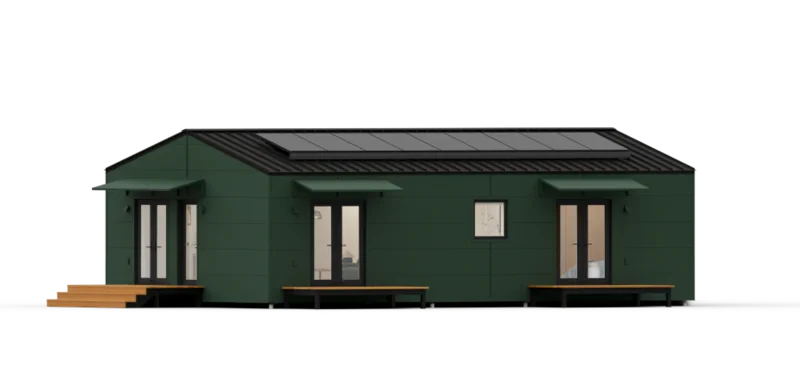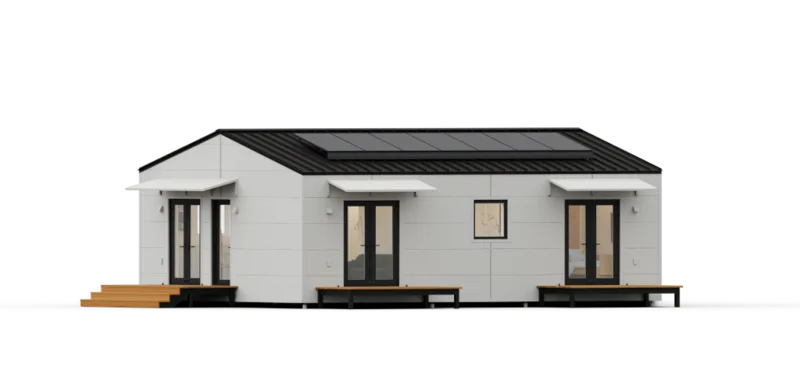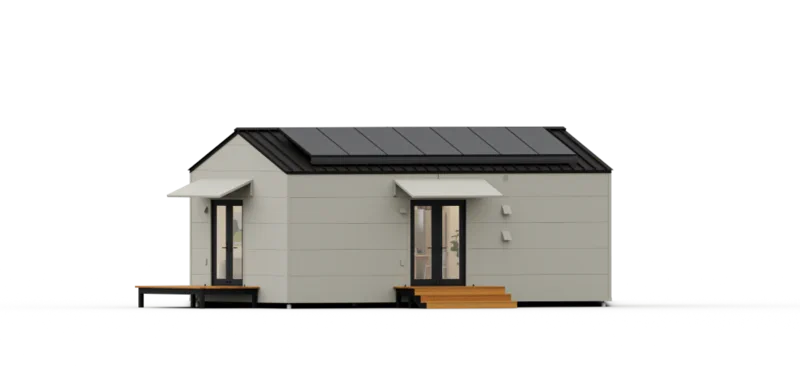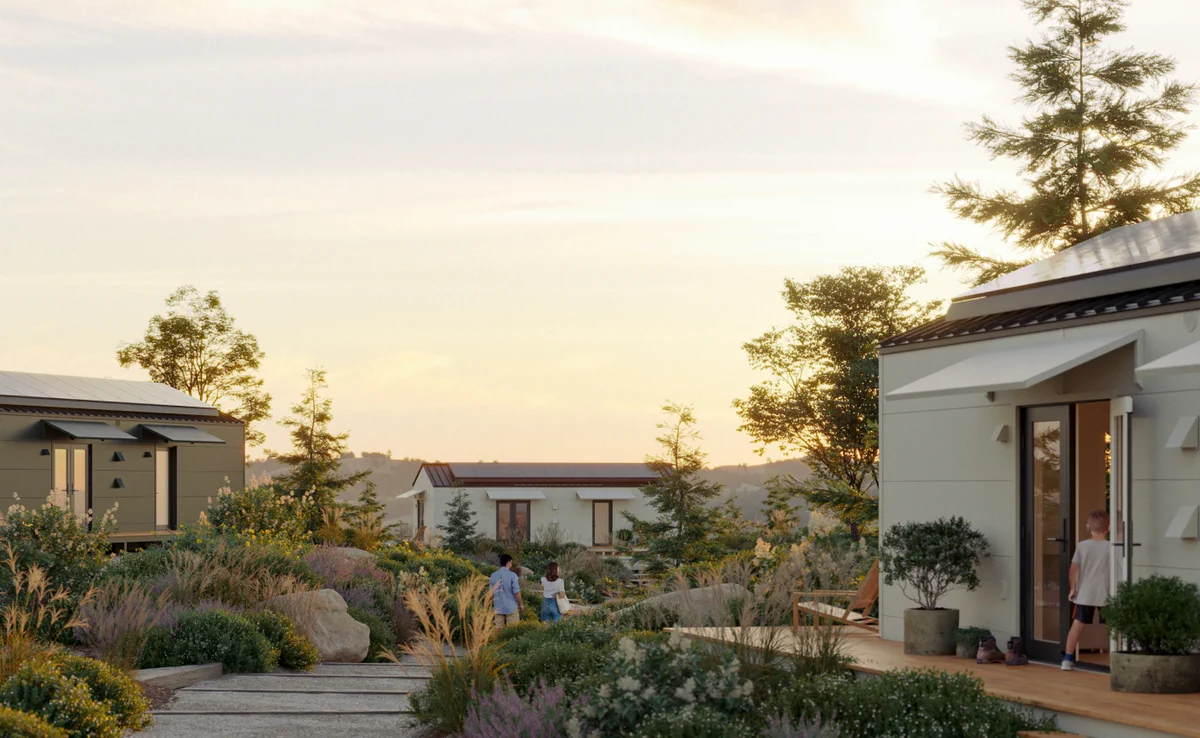How Much Does It Cost To Build an ADU in California?
Logic would dictate that an accessory dwelling unit (ADU) — a type of housing smaller than most single-family residences — would cost less to build. In fact, the opposite is true, especially for homeowners who want to construct a custom ADU on their property. There are often more costs involved in building an ADU than simple construction or furnishing costs.
Whether or not Californian homeowners decide to rent their completed ADU for an additional source of income, the initial investment required can put a sizable dent in their savings. While costs are spread throughout the ADU project, setting a budget early on can help minimize overspending and determine where you can save money.
Strategizing where your funds are best spent can also help you maximize your new ADU to appeal to renters and adjust monthly rental rates accordingly.
California ADU cost breakdown
Homeowners generally spend $250,000+ on an ADU. In that price range, ADUs cost less than half of the average home value in California ($784,989).
Detached ADUs often cost more than attached ADUs, as they aren’t part of the existing structure. It’s typically more affordable to convert a portion of your home into an ADU or choose a prefabricated ADU than go with a custom design.
Beyond construction type, numerous additional factors affect the final cost of an ADU in California, including the following:
- Size
- Design and layout
- Site preparation
- Utility connections
- Permit fees
- Location
Similar to building a single-family residence or even a multi-family dwelling, unforeseen costs can quickly drive up the final price of an ADU. Budgeting for these contingencies can help ensure you’re ready for whatever occurs.
Read on for a detailed breakdown of the various costs associated with building an ADU.
Design costs
Before you can submit a permit to build your ADU, you must first draw up plans that describe your proposed construction. Architects and design consultants can help you with this preliminary step — for a fee, of course.
Beyond the cost of designing an ADU, this critical step can also help you determine the final costs for the entire project, from the furnishings you’ll need to the materials you’ll incorporate.
Permit fees
You must obtain a permit if you want to build an ADU in California. The permitting process ensures homeowners and construction crews work in compliance with zoning, building, and construction codes. Permit fees vary by city and depend on your ADU’s design and square footage.
Individual fees within the permitting process include impact fees, which range from $3 to $4 per square foot. However, impact fees greatly increase for ADUs over 750 square feet. Zoning and building fees may be separate or combined.
Construction
The cost of constructing an ADU begins with preparing the ADU’s intended site and ends with the final cleanup.
ADU construction costs can be broken down into individual expenses, including the following:
- General contractor’s fee
- Raw materials
- Installation and labor
- Landscaping and drainage
- Specialty tools
- Debris removal
Designing a custom ADU can quickly increase construction costs, especially if you incorporate complex elements. Prefabricated ADUs help homeowners control construction costs, as they’re typically predetermined based on the available layouts. Homeowners usually have the option to choose from various options on prefabricated ADUs to fit their personal style as well.
Furnishings
Homeowners can roughly compare the average costs associated with furnishing an ADU to the cost of furnishing a one-bedroom apartment, or $8,353. Besides construction, furnishings represent one of the most common areas where homeowners can quickly spend more than anticipated. While an interior designer’s eye for refinement can help ADUs intended for rental stand out, there is a point of diminishing return.
Contingency
Setting aside funds for unanticipated fees or expenses can help homeowners remain proactive, minimizing the chances of overstepping their budgetary boundaries. A common rule of thumb is to apportion 10% of the ADU’s final costs.
Should unplanned fees total less than what homeowners budgeted for, they can repurpose those funds to upgrade furnishings, place the money back in savings, or put the money toward paying down the cost of the ADU.
Hidden costs
Besides contingent fees, ADUs can also incur hidden costs that homeowners may not be aware of until they’re due. For instance, other prefabricated ADU construction companies may charge you an additional fee to transport your ADU to the intended site and crane it into place. Concerned homeowners should research and ask questions about the entire process to ensure there are no hidden fees that can significantly drive up the cost of an ADU.
Property taxes are another oft-overlooked fee associated with the addition of an ADU. Unlike a major renovation, adding an ADU doesn’t trigger reassessment of your primary home. Your property tax increase is limited to the ADU’s estimated value, based on its market rate and cost, and varies by city.
How can I finance my California ADU?
Due to the high costs associated with building an ADU, most homeowners elect to finance their investment. Construction or renovation loans, home equity loans, cash-out refinances, and home equity lines of credit are some of the most popular financing options. Each has its own advantages and disadvantages that may appeal to homeowners, depending on their financial standings.
In addition, the California Housing Finance Agency offers an ADU Grant Program that provides homeowners with up to $40,000 to put toward their ADU project. While the latest round of funding has already been awarded, stay tuned to the website for the next opportunity to apply for this grant, or check out our in-depth guide to ADU grants in California.
Fortunately, homeowners also have another option for ADU funding. Financing your new Backyard ADU with Samara requires as little as no money down and qualifies you for no payments or interest for 180 days. You can leave your existing mortgage as-is while financing up to 100% of your Backyard ADU and benefitting from fewer fees and zero prepayment penalties.
Samara also takes care of permitting, coordinating site preparation, and scheduling the crane necessary to install your new ADU.
How can I save on my ADU?
When budgeting for an ADU, it’s best to consider the whole picture and strategize where you can cut costs without diminishing your return on investment. Maximizing your spending may require a bit more capital than you first anticipated, but renting the finished ADU can help you quickly recuperate costs within the first couple of years.
Here are a few ideas to save money on your ADU build:
- Incorporate solar panels to offset utility costs: Although the word’s still out on whether or not ADUs must have solar panels, investing in green energy can help offset the cost of electricity, even for a dwelling with such a small footprint.
- Take part in the installation process: Certain procedures are best left to the professionals, but it doesn’t take a degree to know how to pick up a paintbrush.
- Upcycle or purchase used furnishings and appliances: Homeowners may be tempted to finish their ADUs with high-end touches, but select
- Choose a prefabricated design: When designs and materials are pre-determined, it’s easier to account for the final cost without worrying about contingencies.
Homeowners can struggle to strike a balance between spending more to maximize their rate of return and blowing their budget completely. Yet prefabricated designs from Samara can limit the final cost, incorporating many of the contingent expenses in a comprehensive estimate to help homeowners account for as many unexpected fees as possible.
Samara has an ADU for every yard.
Choose from five prefab models.

supersized.

and then some.

Too perfect.

for everything.

Yay big.
Save time and money with a pre-fabricated Samara ADU
Samara offers a wide selection of Backyard ADU designs, with many of the contingent costs absorbed into your final quote.
Here’s how it works:
- Homeowners select from five designs: our studio, one bedroom, and two bedroom models, each with one bathroom, and our XL 8 and XL 10 models, both featuring two bedrooms and two bathrooms.
- Samara installation experts craft an estimate based on an in-person site visit.
- Our team presents you with a site plan, an estimate of installation costs, and a solar proposal.
- Once you review and sign off on the paperwork, we handle the permitting process.
- Upon permit approval, our team begins to prepare the intended site for installation.
- When your new ADU arrives, we hire a dedicated crew to oversee craning it onto its final destination — and congratulate you on your new Samara ADU.
Are you ready to take the next step in building your new Samara ADU? Call us at 650-420-2607 to speak with a Samara specialist. What will you do with your new ADU?
Samara Finance, LLC is licensed by the Department of Financial Protection and Innovation.
Samara does not make loans. All loans are made by Samara’s third-party lender partners. Loans made or arranged pursuant to a California Financing Law, license number 60DBO-188555, NMLS Consumer Access number 2549049.
Sources:
With five prefab models, Samara has an ADU for every yard.
Explore the lineup




